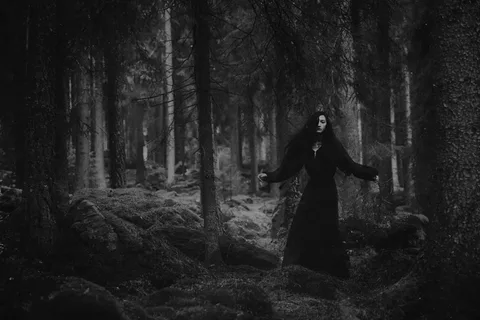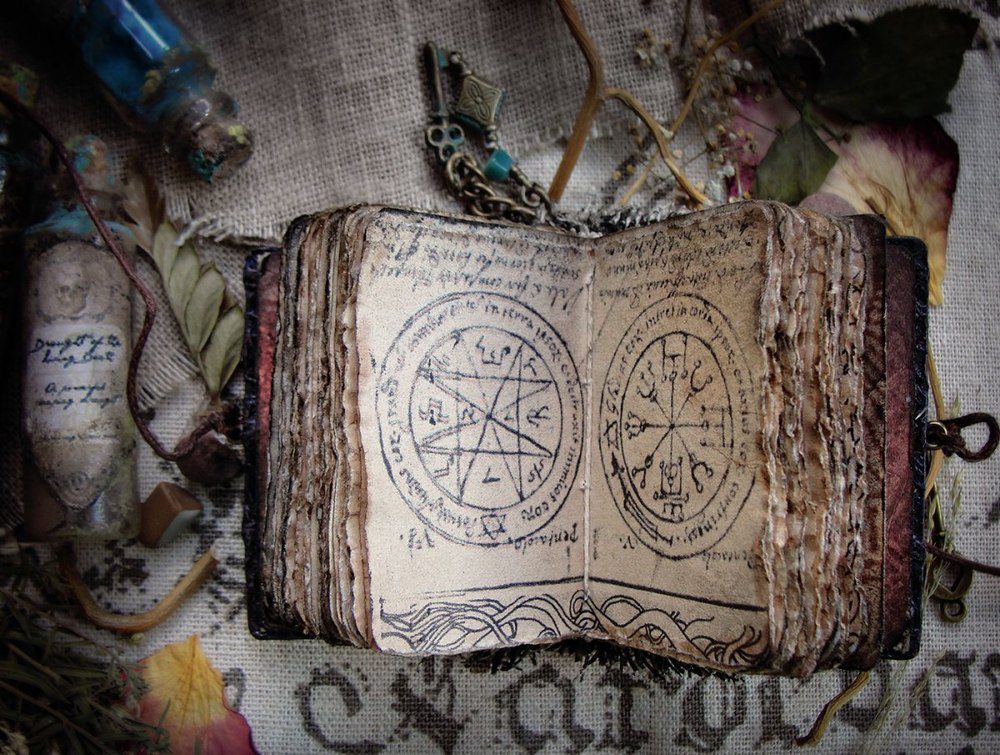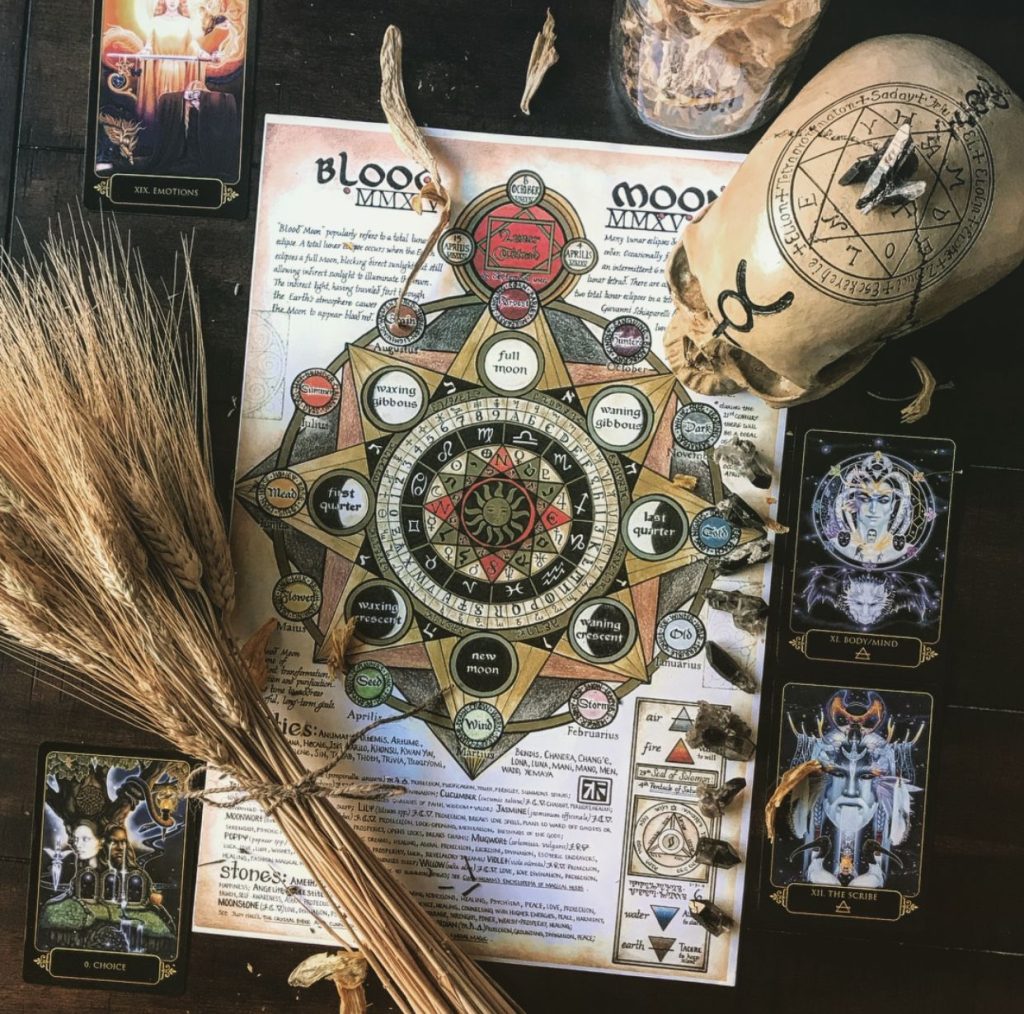The concept of the shadow symbol, as introduced by Swiss psychologist Carl Jung, encompasses the hidden and often denied aspects of our personality. It represents the parts of ourselves that we repress, disown, or find undesirable. The shadow symbolizes a rich and complex realm within us, holding great potential for self-discovery, personal growth, and integration. In this article, we delve into the profound symbolism of the shadow, exploring its significance and the transformative power it offers when embraced.
The Dual Nature of Shadow Symbol
The dual nature of the shadow symbol is a central aspect of its symbolism and holds significant meaning across various cultures, philosophies, and artistic expressions. This duality primarily revolves around the contrast between light and darkness, with shadows acting as the transitional boundary between these opposing forces. Here’s a more detailed exploration of the dual nature of shadow symbolism:
- Light and Darkness:
- Contrast: Shadows are a visual representation of the stark contrast between light and darkness. This contrast is often used symbolically to represent the juxtaposition of opposing forces or concepts. Light may symbolize purity, enlightenment, and goodness, while darkness can represent ignorance, evil, and obscurity.
- Moral and Ethical Duality: In many cultural and religious contexts, the dual nature of shadows is employed to explore moral and ethical dilemmas. Shadows can symbolize the moral choices individuals face and the struggle between right and wrong. This duality is frequently found in literature and art as characters grapple with their inner shadows, making choices that define their paths.
- Yin and Yang:
- Balance and Harmony: In Eastern philosophies like Taoism and Chinese cosmology, the concept of yin and yang symbolizes the balance and harmony between opposing forces. Yin represents darkness, passivity, and the feminine, while yang represents light, activity, and the masculine. Shadows play a role in this symbolism by embodying the yin aspect, emphasizing the need for equilibrium and acknowledging that light and darkness are interdependent.
- Interconnectedness: The dual nature of shadows in the yin-yang symbol illustrates the interconnectedness of all things. It suggests that every aspect of existence has its counterpart, and no quality exists in isolation. This concept promotes a holistic perspective on life and the world.
- Psychological Depth:
- Carl Jung’s Shadow Self: Swiss psychiatrist Carl Jung introduced the idea of the “shadow self” in psychology. This concept represents the hidden, repressed, or unconscious aspects of an individual’s personality. The shadow self encompasses desires, fears, and traits that one may not readily acknowledge or accept. The dual nature of the shadow symbolizes the internal struggle between one’s conscious self and these hidden aspects.
- Integration and Growth: Jung believed that recognizing and integrating the shadow self is essential for personal growth and psychological wholeness. Embracing one’s shadow can lead to self-awareness and a more balanced personality. In this context, shadows symbolize the process of self-discovery and the reconciliation of opposites within oneself.
- In summary, the dual nature of shadow symbolism reflects the perennial themes of balance, contrast, and duality present in human life and thought. Whether as a representation of moral choices, a metaphor for the interplay of opposites, or a tool for exploring the depths of the human psyche, shadows continue to be a potent symbol that invites contemplation and exploration of the complexities of existence.


The Unconscious Mind
The symbolism of the unconscious mind in the context of the shadow symbol is deeply rooted in the theories and insights of the Swiss psychiatrist Carl Gustav Jung. Jung’s exploration of the shadow self and the unconscious mind has had a profound impact on psychology, art, literature, and spirituality. Let’s delve deeper into the concept of the unconscious mind as related to the shadow symbol:
- Carl Jung’s Shadow Self:
- Definition: Jung’s concept of the “shadow self” refers to the hidden and often repressed aspects of an individual’s personality. These aspects include desires, fears, instincts, and qualities that are not readily acknowledged in one’s conscious self. The shadow symbol is metaphorically “in the shadow” because it operates beneath the surface of our awareness.
- Symbolism of Shadows: Jung used the shadow symbol to represent these hidden aspects of the self. Shadows, in this context, serve as a visual metaphor for the aspects of our psyche that we have not fully integrated into our conscious identity.
- Integration and Individuation: Jung believed that a crucial part of psychological growth and individuation (the process of becoming one’s true self) involves confronting and integrating the shadow. By acknowledging and embracing these hidden facets of the self, individuals can achieve greater self-awareness and psychological wholeness.
- The Unconscious Mind:
- Layers of the Mind: Jung’s model of the mind consists of three layers: the conscious mind (the thoughts and feelings we are aware of), the personal unconscious (individual experiences and memories), and the collective unconscious (shared, universal symbols and archetypes). The shadow symbol primarily resides in the personal unconscious but has connections to the collective unconscious.
- Archetypal Imagery: The collective unconscious, which is deeply related to the concept of shadows, contains archetypal imagery that is common to all human beings. These archetypes are universal symbols that appear in myths, dreams, and art across cultures. Shadows can be seen as a manifestation of the archetype of the “dark” or “shadowy” figure, which represents the hidden aspects of the self.
- Art and Literature:
- Literary and Artistic Expression: The shadow symbol as representative of the unconscious mind has been widely used in literature and art. Characters in literature often grapple with their shadow selves, facing internal conflicts and moral dilemmas. Artists use shadows to convey the complexity of human psychology and the hidden depths of the unconscious.
- Metaphor and Allegory: Shadows can serve as metaphors and allegories for the human condition. In literature, for example, shadows may represent the unexamined aspects of a character’s psyche, and their journey may involve confronting these shadowy elements to achieve personal growth.
In conclusion, the symbolism of the unconscious mind as represented by shadows is a central theme in Jungian psychology and has far-reaching implications for understanding human nature, personal development, and creative expression. Shadows, in this context, provide a visual and metaphorical gateway to explore the depths of the human psyche and the process of individuation, ultimately leading to greater self-awareness and integration.
Artistic Expression of Shadow Symbol
The artistic expression of the shadow symbol is a rich and multifaceted aspect of human creativity. Artists have long been drawn to the interplay of light and darkness, and the symbolism of shadows offers them a versatile and powerful tool to convey a wide range of emotions, themes, and concepts in their work. Here’s a deeper exploration of how artists use the shadow symbol in various art forms:
- Ambiguity and Mystery:
- Intrigue: Shadows create an aura of mystery and ambiguity in art. They obscure details and can evoke a sense of the unknown, inviting viewers to engage their imagination. The uncertainty of what lies within the shadows can be captivating, drawing viewers deeper into the artwork’s narrative.
- Psychological Depth: Artists often employ shadows to symbolize the hidden aspects of the human psyche. Characters or objects partially concealed in shadow can represent inner conflicts, secrets, or repressed emotions. This psychological depth adds layers of complexity to the artwork.
- Contrast and Drama:
- Chiaroscuro: Chiaroscuro is a technique that uses strong contrasts between light and dark to achieve a sense of volume and drama. This technique, famously employed by artists like Caravaggio, Rembrandt, and Leonardo da Vinci, emphasizes the three-dimensionality of objects and figures by rendering them in stark light and shadow.
- Emotional Impact: Shadows can be used to heighten the emotional impact of a scene. Dramatic lighting, with shadows casting long and distorted shapes, can create a sense of tension, suspense, or foreboding, adding depth and intensity to the artwork’s narrative.
- Metaphor and Symbolism:
- Transience and Impermanence: Artists often use shadows as a metaphor for the transient and impermanent nature of life. The shifting patterns of shadows, influenced by the movement of light, symbolize the passage of time and the ephemerality of existence.
- Moral and Ethical Dilemmas: Shadows can represent moral and ethical dilemmas in art. Characters caught in moral quandaries may be depicted in a play of light and shadow, symbolizing their internal struggle and the choices they face.
- Sculpture and Three-Dimensional Art:
- Depth and Texture: In sculpture and three-dimensional art, shadows play a crucial role in creating depth and texture. Sculptors use shadows to accentuate the contours of their work, giving it a lifelike quality. The interplay of light and shadow adds realism and dimensionality.
- Negative Space: Sculptors often create negative space by sculpting forms that cast shadows on the surrounding environment. This manipulation of shadow adds an extra layer of complexity and depth to the sculpture, engaging viewers from multiple perspectives.
- Cinematic Expression:
- Film Noir: In cinema, the shadow symbol is prominently featured in the film noir genre. Film noir movies use shadows and low-key lighting to create an atmosphere of mystery, crime, and moral ambiguity. Shadows can represent the hidden motives and dark secrets of characters.
- Character Development: Directors use lighting and shadows to symbolize character development. As a character’s journey progresses, their interaction with light and shadow can change, reflecting their evolving emotional state or moral choices.
In summary, the artistic expression of the shadow symbol is a versatile and evocative tool that artists across various disciplines use to convey a wide array of themes and emotions. Whether it’s in painting, sculpture, literature, photography, or cinema, shadows add depth, complexity, and layers of meaning to artistic works, making them a powerful and enduring symbol in the world of art and culture.


The metaphor of Shadow Symbol for Impermanence
The metaphor of the shadow symbolizing impermanence is a profound and evocative concept that has been explored in various cultural, philosophical, and artistic contexts. This metaphor draws on the transient nature of shadows, which are constantly changing and shifting in response to the movement of light. Here’s a deeper exploration of how the shadow symbol is used as a metaphor for impermanence:
- Shifting and Transient Nature:
- Passage of Time: Shadows are constantly in flux as they move and change shape with the movement of the sun or other light sources. This constant transformation mirrors the passage of time in our lives and the ever-changing nature of existence.
- Temporal Beauty: The fleeting beauty of shadows can be seen as a metaphor for the fleeting moments of beauty in life. Just as a particularly striking play of light and shadow may last only for a moment, moments of joy, love, or happiness in our lives are often brief and ephemeral.
- Symbol of Ephemeral Existence:
- Life’s Fragility: Shadows symbolize the fragility of life and the impermanence of all things. Just as a shadow disappears when the light source is removed, our existence is transient, and all things must eventually come to an end.
- Reminders of Mortality: Artists and writers often use shadows to remind us of our mortality. A common motif in art and literature is the juxtaposition of light and shadow to create a memento mori, a reminder of the inevitability of death and the need to embrace life fully.
- Metaphor for Change:
- Adaptation and Growth: Shadows also serve as a metaphor for personal growth and adaptation. In times of change and transformation, individuals may feel like they are navigating through the shadows, adjusting to new circumstances and experiences.
- Cycles of Life: The daily cycle of shadows cast by the sun can represent the cyclical nature of life itself. Just as shadows return each day, life continues in a never-ending cycle of birth, growth, decay, and renewal.
- Spiritual and Philosophical Interpretations:
- Zen Buddhism: In Zen Buddhism, the impermanence of all things, known as “impermanence” (mujō in Japanese), is a central concept. Shadows are often used as a metaphor to illustrate this principle. Meditating on the transient nature of shadows can lead to deeper insights into the impermanence of reality.
- Eastern Philosophies: Many Eastern philosophies, such as Taoism, emphasize the cyclical and impermanent nature of existence. Shadows can symbolize the ever-changing flow of life and the need to find balance and harmony within these fluctuations.
In conclusion, the metaphor of shadows symbolizing impermanence provides a poignant and thought-provoking perspective on the human experience. It encourages us to appreciate the beauty in the transitory moments of life, accept the inevitability of change, and reflect on the impermanent nature of all things. Whether used in art, literature, philosophy, or spirituality, this metaphor serves as a reminder to cherish the present moment and embrace the ever-shifting landscape of existence.
Shadow Work Practices
Shadow symbol work practices are a form of psychological and spiritual self-exploration aimed at uncovering and integrating the hidden or repressed aspects of one’s personality, often referred to as the “shadow self.” These practices of shadow symbol draw upon the concept developed by Swiss psychiatrist Carl Jung and are used to promote self-awareness, personal growth, and emotional healing. Here’s a more detailed look at shadow work practices:
- Understanding the Shadow Self:
- Identification: The first step in shadow symbol work is identifying the aspects of your personality that you have suppressed or denied. These can include fears, desires, insecurities, negative traits, or unresolved traumas. Recognizing these hidden elements is essential to the process.
- Carl Jung’s Influence: Carl Jung introduced the concept of the “shadow self” as a repository of these repressed or disowned aspects. He believed that acknowledging and integrating the shadow was crucial for achieving psychological balance and self-actualization.
- Practices for Shadow Work:
- Self-Reflection: Journaling, meditation, and introspection are common practices used to explore one’s thoughts, emotions, and past experiences. These practices can help you uncover patterns of behavior and thought that may be rooted in your shadow self.
- Dream Analysis: Jung believed that dreams provide valuable insights into the unconscious mind. Analyzing your dreams can reveal hidden aspects of your personality and unresolved issues. Keeping a dream journal and working with dream symbols is a part of this practice.
- Creative Expression: Art, writing, and other creative outlets can serve as powerful tools for shadow work. Creating art or writing that reflects your inner thoughts and emotions can help you confront and understand your shadow self.
- Inner Dialogue: Engaging in an inner dialogue with your shadow self can be a transformative practice. You can do this by imagining a conversation with a representation of your shadow, allowing it to express its fears, desires, and concerns. This can lead to greater self-awareness and acceptance.
- Therapeutic Techniques: Many therapeutic approaches, such as psychoanalysis, Jungian therapy, and cognitive-behavioral therapy, incorporate shadow work principles into their practices. Working with a trained therapist can be particularly effective for addressing deep-seated issues.
- Integration and Healing:
- Integration Process: Once you’ve identified the contents of your shadow self, the next step is integration. This involves accepting these aspects of yourself without judgment and finding healthy ways to incorporate them into your conscious identity. Integration does not mean acting out negative traits but rather understanding and managing them.
- Emotional Healing: Shadow work often involves emotional healing. By confronting and processing past traumas or repressed emotions, individuals can experience emotional release and relief. This can lead to a greater sense of well-being and emotional balance.
- Personal Growth: Shadow work is a transformative process that can lead to personal growth and self-actualization. As you integrate the various aspects of your psyche, you may experience increased self-esteem, improved relationships, and a greater sense of purpose.
- Spiritual and Transcendent Aspects:
- Spiritual Growth: Some individuals approach shadow work as a spiritual journey. They see it as a path toward self-discovery, enlightenment, and a deeper connection with their spiritual beliefs or practices.
- Transcendence: For some, shadow work is about transcending ego-based limitations and moving toward a state of higher consciousness. It can be seen as a means to achieve greater self-awareness and a more profound understanding of the self and the universe.
In conclusion, shadow symbol work practices are powerful tools for self-discovery, personal growth, and emotional healing. They involve a deep exploration of the hidden aspects of one’s personality, ultimately leading to greater self-acceptance and a more balanced and fulfilling life. Whether approached as a psychological, spiritual, or transformative journey, shadow symbol work can be a profound and transformative practice.


Conclusion
The shadow, with its profound symbolism and hidden depths, holds the potential for profound personal transformation. By embracing the shadow symbol , we embark on a journey of self-discovery, acceptance, and integration. As we explore the hidden aspects of our psyche, we unlock dormant potentials, unveil buried strengths, and cultivate a deeper understanding of ourselves. The integration of the shadow symbol leads to a more authentic and empowered existence, fostering personal growth, and enriching our relationships with others and the world at large.


Pingback: The Profound Shadow Symbol: Exploring the Depth...